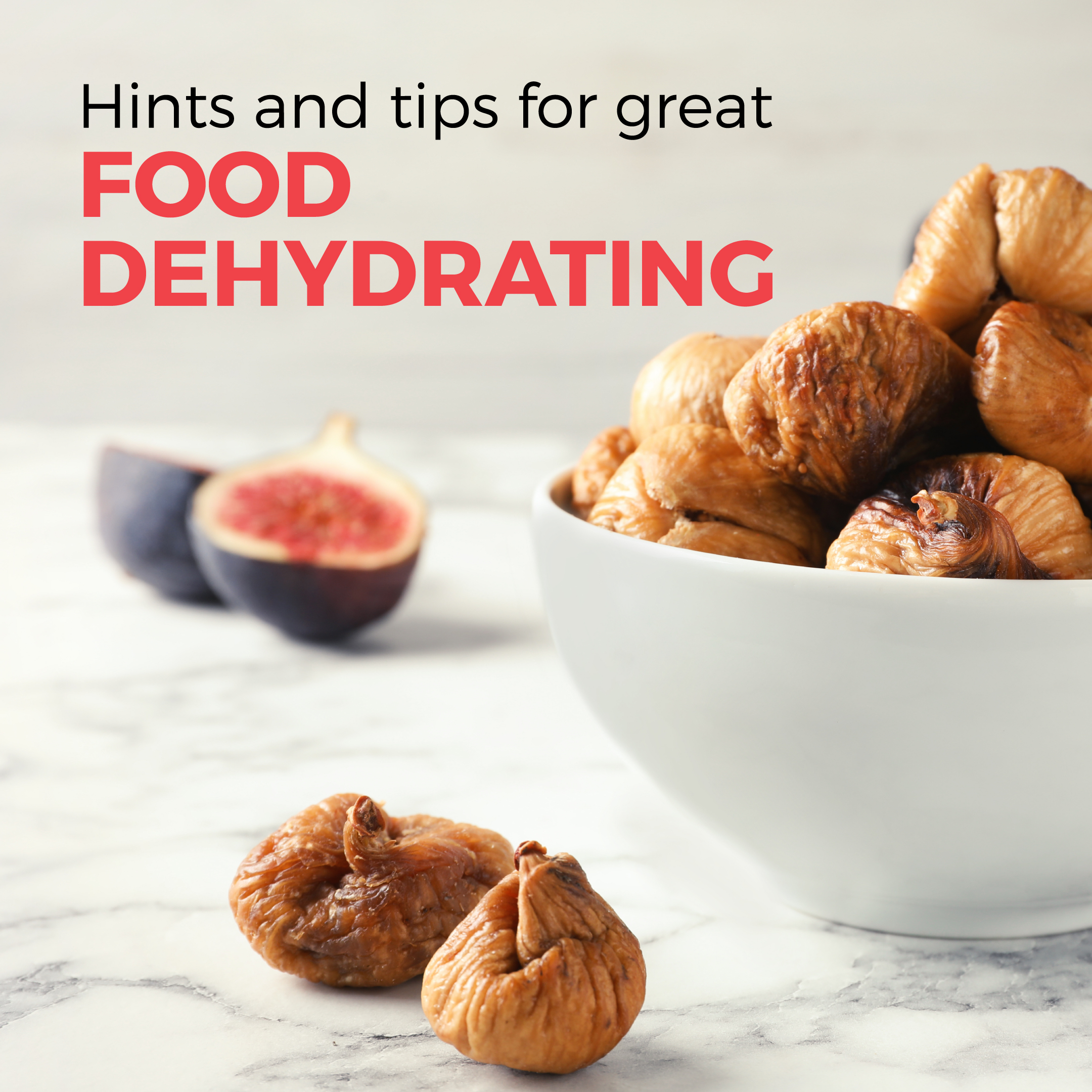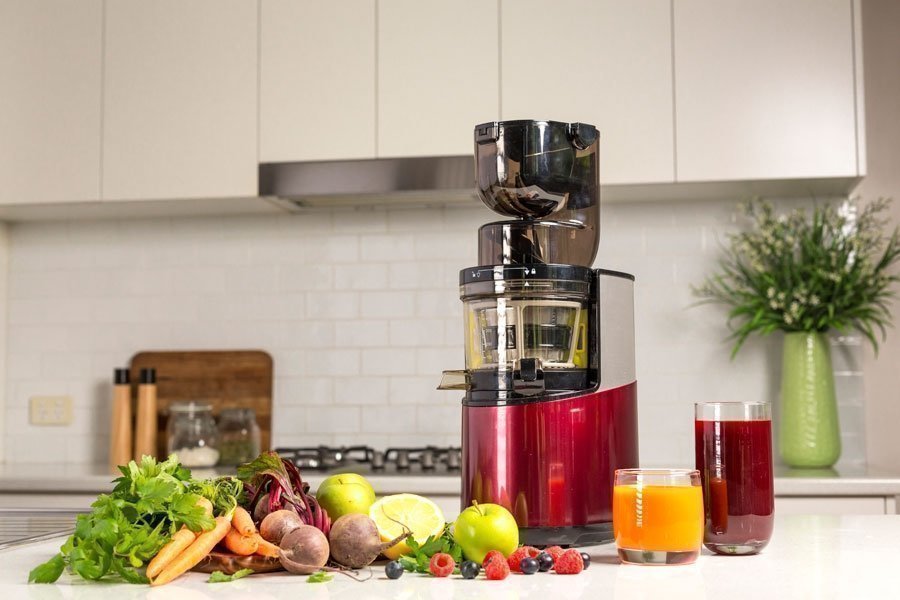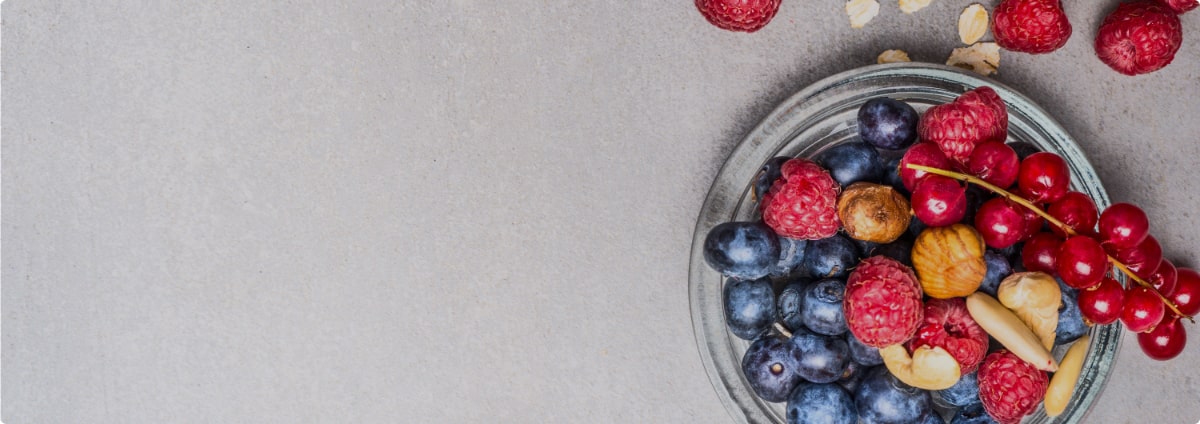Vitality 4 Life uses cookies to provide and improve our services, if you continue browsing, we consider that you accept its use. For more information, please see our privacy page.

Hints and tips for great food dehydrating
Choosing foods to dehydrate
• For best results only use highest quality foods.
• Produce in peak season has more flavour and more nutrients.
• Meats, fish and poultry should be lean and fresh.
• Do not use food with bruises and blemishes. Bad produce can spoil the entire batch.
• Remove as much fat as possible from meats prior to dehydrating. You can use a
paper towel under meat when dehydrating to absorb fat.
Tips for Pre-Treatment of Foods
With most types of cooking, preparation is important for the best results. Foods that are prepared correctly prior to dehydration will taste better and have a better appearance.
Cut, shred or dice the food uniformly. Slices should be between 6mm and 20mm thick. Meats should not be thicker than 5mm.
To avoid browning of fruits soak cut fruit in lemon or pineapple juice for 2-3 minutes, then place in the dehydrator. Alternatively soak in an ascorbic acid solution (made as per manufacturers instruction) for 2-3 minutes, then place in the dehydrator.
Waxy fruits, (such as peaches, grapes, blueberries, etc.) should be dipped in boiling water to remove the wax. This allows moisture to escape easily during dehydration.
Blanching can also be used to pre-treat foods for dehydration.
Preparation of Foods
For best results, select the freshest foods available to dehydrate. Note that immature fruits and vegetables do not have as much colour and flavour as those that are fully matured. Foods should be dehydrated as soon after purchase as possible. Foods high in sugar such as apples, pears, peaches and bananas are prone to darkening due to oxidation of the sugars.
Below are some pre-treatments that will help to reduce this effect:
Lemon and pineapple juice are natural antioxidants. Place the sliced produce in fresh lemon or pineapple juice for a few minutes, remove, drain and place on the dehydrator shelf. For extra flavour, try sprinkling on cinnamon or other spices.
Ascorbic acid mix, (a form of vitamin C) is available at most health food stores and is can be used in tablet or powder form. Use about 2-3 tablespoons of powder or ground tablets per litre of water; stir to completely dissolve the powder and place fruit into the solution for 2-3 minutes. Remove, drain and place on the dehydrator shelf.
Blanching is used primarily to prepare fruits and vegetables for dehydrating that have skins that will toughen during drying. This process helps lock in the colour and flavour as well as soften the skin of grapes, cherries. prunes and plums. There are two blanching methods: Water and Steam.
Water Blanching - Fill a large saucepan about half full of water. Bring the water to a boil and use tongs to place food directly into the water, cover the saucepan and let it simmer for approximately 3 minutes. Remove, drain and place on the dehydrator shelf.
Steam Blanching - Using a steamer pot such as one used in Chinese cooking, put 5-8 centimetres of water in a saucepan and bring to a boil. Place the food into the steamer basket, place over the saucepan and cover. Steam food for approximately 5 minutes, then remove and place on the dehydrator shell.
PLEASE NOTE: There are no exact rules that apply to food dehydration, as results can be affected by room temperature, relative humidity and moisture levels in the food that you are drying. To become proficient it will be necessary to experiment with your drying techniques. If you use too much heat, food may harden on the outside while being moist inside; however, with too little heat your drying times will be very long.
With a little practice you will be creating tasty, ready to eat snacks in no time.
Dehydrating Tips
• Do not overlap foods. Make sure foods are fl at when placing on dehydrating trays.
Overlapped foods can greatly increase drying time.
• Make sure foods are completely dry before removing. If you are not sure, cut a sample down the middle to check for internal dryness.
• Make sure to label containers when you store your dehydrated food.
• Proper storage helps maintain quality food. Package the food when cool. Foods can be kept longer if stored in a cool, dark and dry place. The ideal storage temperature is 16°C or lower.
• Vacuum sealing is a great way to keep dehydrated foods.
• Food will shrink approximately ¼ to ½ their original size and weight during
dehydration. Make sure not to cut pieces of food to be dehydrated too small.
Food Storage
Dried foods should be allowed to condition before being placed into a storage
container. Generally, let stand for approximately one week in a dry, well ventilated and
protected area. The conditioning time allows for further drying and removes most of
the remaining moisture.
Dried foods can be placed into clean, dry, insect resistant containers, preferably glass
jars. Heavy gauge plastic freezer bags can also be used. Remember to eliminate as
much air as possible before sealing the bag. When used properly, vacuum sealers
provide the ideal storage method. The less air present, the less potential for the
formation of mould.
Reconstitution
Dried foods do not need to be reconstituted for consumption. Many people prefer to eat them in their dried state. If you want to reconstitute your food, here are some basic guidelines:
• Soak food in unsalted water for 3 - 7 minutes and then prepare as usual. If you are boiling them, use the same water they soaked in to preserve nutrients. If you plan to soak foods for more than one hour, they should be placed in the refrigerator to prevent bacterial growth.
• One cup of dried vegetables will reconstitute approximately two cups.
• One cup of dried fruit will reconstitute to about one and a half cups.
• Reconstitution times will vary depending on the thickness of the food and the water
temperature used.
• Warm water will speed up reconstitution but may result in some flavour loss.
Drying times
The following charts are guidelines for the preparation of various fruits, vegetables and meats. Drying times will vary depending on the room temperature, relative humidity and moisture levels in the food that you are drying. If the moisture level is low, the drying time will be on the low end of the range. However, if the moisture level is high, the drying time will be on the high end of the range.
Keep in mind that drying times are also affected by the amount of food placed on the shelves. Overloading the shelves will slow the drying time and may produce poorer results.
When dehydrating foods, it is important to check on the dryness of the product. If the product is not thoroughly dried, mould may form during storage (see Food Storage). To test for dryness, remove a piece of food from the dehydrator and allow it to cool to room temperature. Bend and tear the piece to check for internal moisture.
There are a variety of food dehydrators available from Vitality 4 Life.











